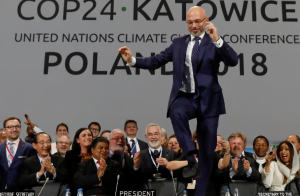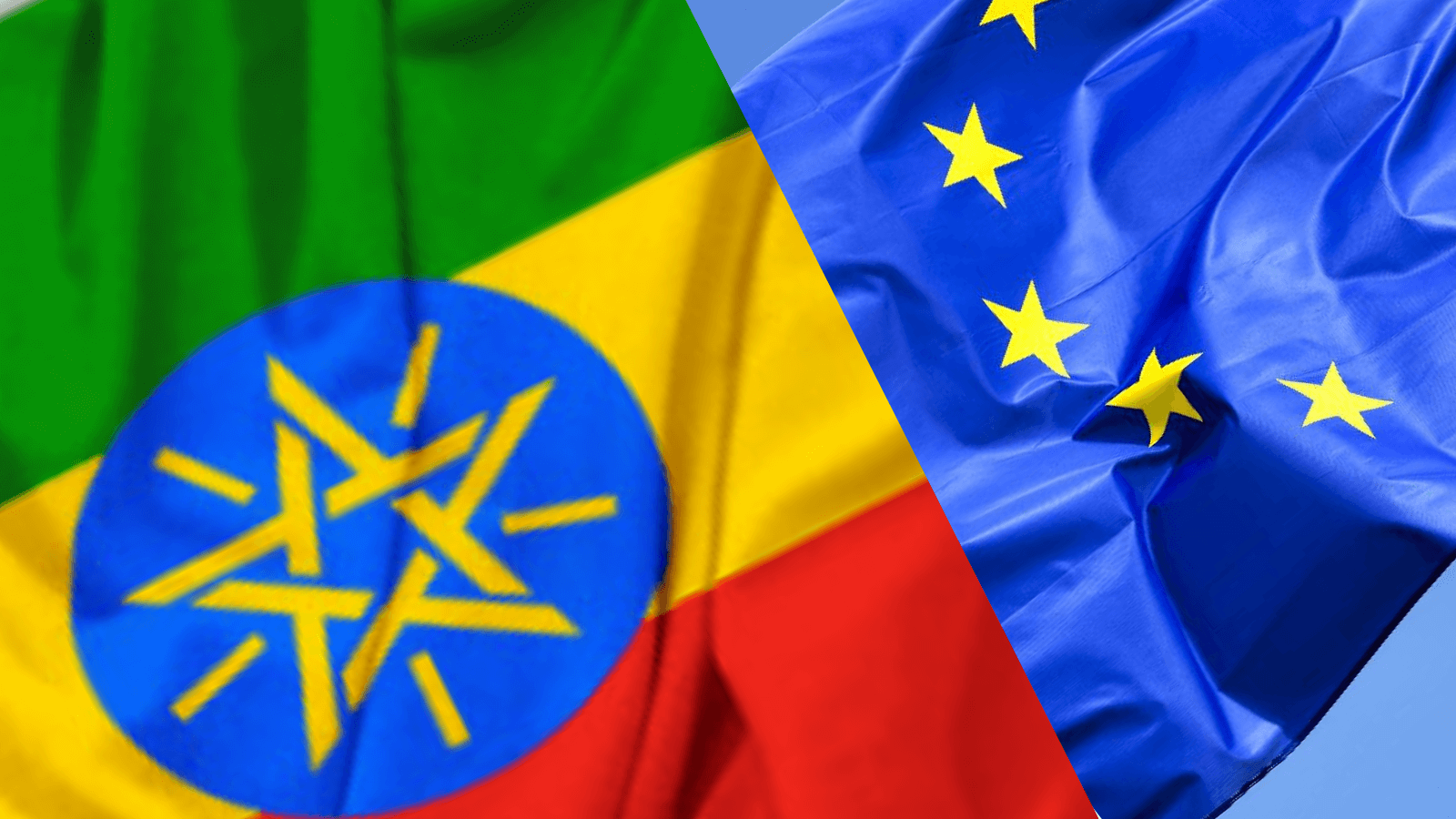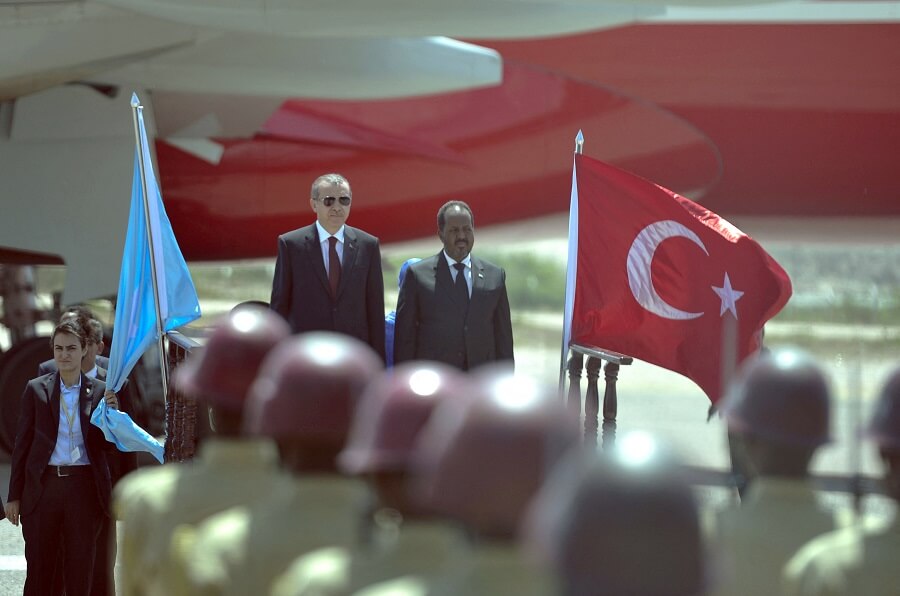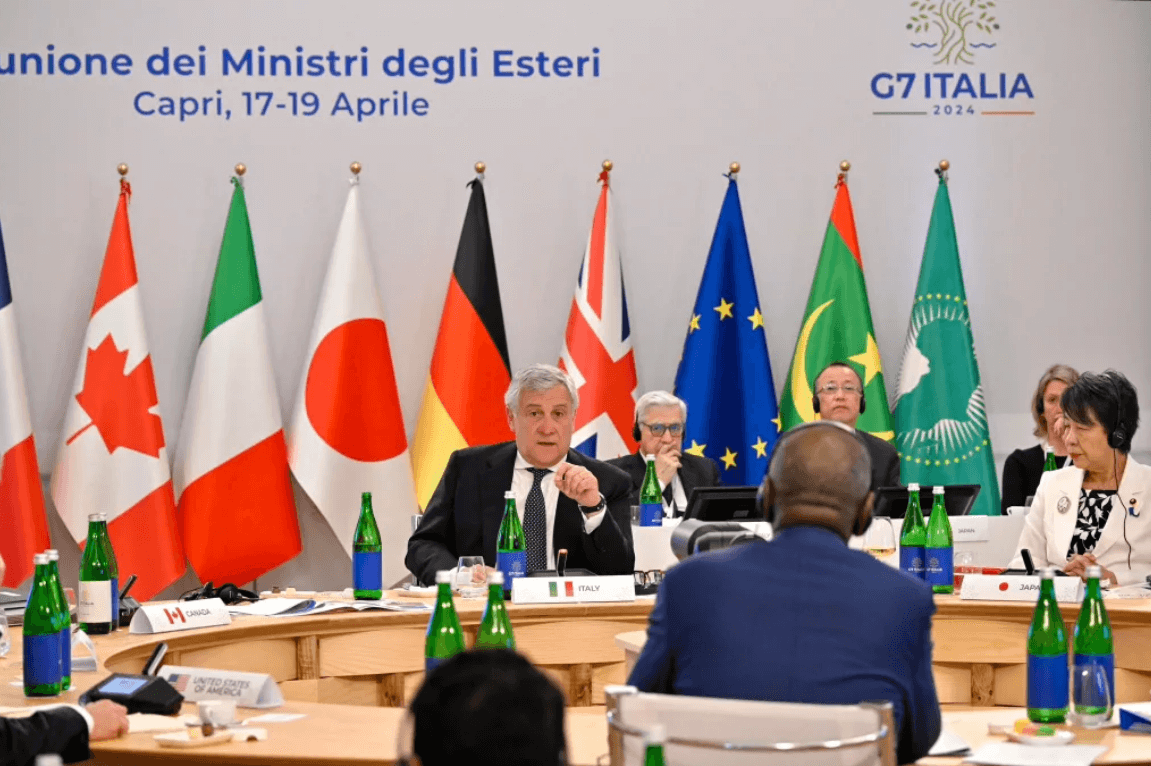Commentary: Uncovering the nextgen carbon market: Ethiopia in Perspective
Ambachew F. Admassie, for Addis Standard
Part 2
Addis Abeba, December 20/2018 – Part 1 of my rejoinder attracted some interesting reactions from readers. Some seemed apparently misled by the picture of local traffic pollution in Addis inserted by the editors, expressed they were worried the Addis’s pollution has been extrapolated to the whole country. Others stressed our per capita emission is so insignificant that it is too much a temper tantrum. Another reader provided infographic inputs to show the emissions trajectory of nations like China, the most emissive state in the world, has almost been similar on per capita basis as ours few decades back and hence do nothingness is not an option. All comments have captured some elements that support the intention of my rejoinder i.e. primarily to ignite a meaningful public debate on cross cutting issues. Secondly, to appreciate that climate change is not primarily about local pollutants, although some greenhouse gases and local pollutants co-exist in fossil fuels (some are precursors). For now CO2, CH4, N2O, SF6, PFC, HFC and HN3 are gases mainly targeted by the global community as greenhouse gases. Aiming for air quality indirectly of course achieves abating some of these greenhouse gases, specifically in case of fossil fuels. This leads to the delicate enquiry of “which one among these would a certain state naturally target first? When or at what level of economic development?” This ignites the “equity” and “respective capability” debate. Third aim is to reflect, in a delicate but “no free-rider” climate regime, what is whose role in responding to this collective destiny, who finances which segment of a clean technology transfer or shift there-off and what is in it for each of us?
Thank you all for the useful comments!
 Caption: exalted Polish Presidency during the adoption of the COP 24 report. Plenary happened 48 hours after anticipated time, only after postponing markets rules to the next COP.
Caption: exalted Polish Presidency during the adoption of the COP 24 report. Plenary happened 48 hours after anticipated time, only after postponing markets rules to the next COP.
The Paris Agreement (PA) still kept “Common goal but differentiated responsibility with respective capability” commonly called “CBDR-RC”; the original tenet of the Climate Convention when rallying the committee of nations for action. In achieving this, it employed a Party led process whereby states were invited to submit a bottom up pledge, most importantly targeting GHGs that they believe reflects their respective capability. As to the level of ambition expected as per respective capability Articles 4.4 & 4.6, “Developed country Parties should continue taking the lead by undertaking economy-wide absolute emission reduction targets. Developing country Parties should continue enhancing their mitigation efforts, and are encouraged to move over time towards economy-wide emission reduction or limitation targets in the light of different national circumstances.” The least developed countries and Small Island developing States “may prepare and communicate strategies, plans and actions reflecting their special circumstances.” So they did and around 195 states deposited instruments of ratification by end of 2016 and whatever they pledged became their installed ambition for that period.
As one of the methods of enhancing efficiency of greenhouse gases (GHG) mitigation, PA employed cooperative mechanisms including carbon markets, a post 2020 successor to the carbon market under the Kyoto Protocol (KP). Carbon markets provide flexibility for emissive installations in developed states to obtain (purchase) emissions reductions units from another installation in other state at a cheaper rate than the rate they will be able to achieve it if they invest domestically. Installations in the developed world were allowed to fulfill up to 10% of their reduction targets through the carbon market. For installations in developing states, the carbon market revenues for the carbon credits they generate will justify the additional investment needed to realize shift to the new technology or to overcome the barriers associated with it. Moreover, 2% share of proceeds from the market sales went to finance Adaptation Fund. For enabling this, the KP established three carbon markets i.e. the Clean Development Mechanism (CDM) for the Developed-Developing, the Joint Implementation (JI) for the Developed-Developed and the Emissions Trading Systems (ETS) for domestic trading in a developed States.
It would be great to briefly acquaint readers with what the carbon market looked under the KP so that it becomes easier to grasp the future. Under the KP’s-CDM market where the Developed took targets and the Developing voluntarily reduced emissions for trading them to the developed, carbon market actors generated a total of 7 billion tradable units and transacted 2 billion while the balance of about 5GtCO2e reduction is in or will slowly enter till 2020, in the reserve account of the registry administered by the CDM Executive Board under the UN. In the years from 2006 to 2012 carbon markets reached a staggering $200 billion per year with units at one time fetched €28 before it crashed to under €1 today. Among the 8000 plus projects and programs recognized internationally, about four projects and five programs are from Ethiopia, only one of which issued so far, about 100,000 units, 0.00005% of global issuance.
Performance of many African states under the KP carbon market was poor by all standards. Recognized projects and issued credits fell less than 2% of the world. Challenges cited were methodological complexity, lack of initial investment, upfront costs of dollar denominated carbon project development & accreditation, unaware owners of emissions sources and skewed international governance. Ethiopia suffered from several additional factors including reluctance to install basic processes, personal philosophical turfs in the EPA leadership of “why do we clean the mess the rich polluted” while religiously attending each small “capacity building” gatherings. India, China and Brazil installed their robust domestic institutional arrangement & processes, enhanced promotions, engaged carbon actors and already reached issuing 1000 domestic approvals by which time Ethiopia just installed its one man Designated National Authority (DNA) in 2007.
In Ethiopia, there was also an overwhelming myth that was often projected top down from the “I know all” state suggesting “there is no emission to reduce” making it difficult for Project developers struggling to explain the value in the carbon market even in big private emission sources. Official government documents and speeches give a “nationalization” sense of “you generate for the government to own”. Who was that government to even think of claiming or trading the emissions I reduced? Private actor’s pursuits to achieve introducing one more international trading field proved too expensive and risky in an already complicated Ethiopian trade rules and licensing procedures marred by the appetite of control freak regime. Carbon asset developers couldn’t cooperate with the public sector and hence Ethiopia’s cleaner public investments lost hundreds of millions of dollars of carbon revenue opportunities from all of the renewable power plants and electric rails built on huge international debt since 2001 and by now risk being considered as “Business as Usual Baselines” affecting even the investments yet to come. In contrast, similar projects were lavishly credited all over the other enabling developing states.
Fast forward, under Paris, the KP instruments are now being replaced by Article 6.2 and 6.4 for the post 2020 world. Article 6.4, commonly called “the 6.4 Mechanism”, is more or less the same as the CDM and entertains units to be traded by actors from specific Projects and Programs albeit few more parameters of Environmental Integrity stringency added. Article 6.2 allows trading net emissions performance of an entire economy, to another state to meet its NDC and re-distribute the revenue. In both cases Internationally Traded Mitigation Outcomes (ITMOs) are created and transferred for a rate agreed between sellers and buyers. A peculiarity here is that each party observes its Nationally Determined Contribution (NDCs) and hence each time ITMOs are transferred a certain discount is made to ensure it is not a pure offset scheme like the KP-CDM. Corresponding adjustment has to be made to the national emissions inventory to make sure that states don’t “double count” or irresponsibly export their unconditional pledge. One other participation requirement is for states to respect human rights (including property rights) and that emissions reduction projects would not also harm the domestic environment & human rights.
Should Ethiopia wish to participate in the new carbon markets and benefit therefore, there are few early actions to be taken, among others,
- Ethiopia is one of the least developed countries that Parties agreed “may prepare and communicate strategies, plans and actions reflecting their special circumstances.” as its NDC. While backtracking is not prudent, we still need to meaningfully explain our overambitious NDC in a rational manner and establish the “unconditional” segment of our NDC. We need also outline which inevitable policy interventions and investments reflect our “respective capability” and result in achieving those unconditional pledges. The gap between the unconditional threshold and the target would then be filled through interventions/investments from public or/and private entities through either direct international support channels under article 6.8 or competitive participation in the carbon markets under the cooperative mechanisms of 6.2 and 6.4. An unreasonably high unconditional pledge therefore lowers the rightful advantage from the carbon market and other sources. This has to be made in due transparency and domestic consultation.
- We may also need to re-orient the NDC in two matrices, CO2 matrix and MWh matrix, so that energy exports may fetch revenues under Article 6.2, if we are going to agree on “double counting” and “Additionality” safeguards on COP25.
- Establish the bodies that are needed to exactly respond to the provisions of the agreement and making them operational, transparent and participatory. For example participating on the 6.4 Mechanism would require establishing a Designated National Authority (DNA) in time, which better not be a one man indulgence, although of course the signatory need be one. This body should be tasked with actively relieving challenges of carbon asset developers in addition to issuing domestic approvals to proposals before the international accreditation process begins.
- Ethiopian public institutions are normally criticized for having a track record of producing counterfeit reports. Reports commonly aimed to appease immediate bosses, hide underachievement, exalt the “developmental state” or close the gap of “stretched targets”. That habit has to die into the past. There is none good to come out of that and nobody would benefit except hiding incompetence of few or a system. We need to install an internationally credible & independent domestic emissions inventory structure and inventory plan that is able to competently perform unto standard inventories and credible reports. Tasking civil servants to perform such reports is also a recipe for conflict of interest as well as bypassing “independent MRV”. If there are such experts, they would do great social integrity if they open their own private company, compete, create jobs and pay taxes. The habit of producing inferior quality reports with an assumption of “they won’t be hard on us anyway” should recede to the past. The Paris “Transparency” world is one main field of action whose details migrated away from the past “non-intrusive, non-punitive” modus operandi. Poor and reluctant reporting habits will therefore prohibit participation of diligent actors and cost invested national resources. Reporting transparency also helps to target the right and large sources of emission. The Ministry of Finance should transparently and publicly avail international climate finance funds received, to help the domestic and international public know how much public fund it received and how much of it has been prudently & properly spent for the intended and earmarked climate change thematic purpose.
- Equally important, although LDCs are left to their discretion, Ethiopia has to avail itself to international scrutiny as per the recommended process and frequency in the Paris rule book. The more parties avail themselves for scrutiny, the higher they garner international resources either from the public grants or international market actors. Discretion is a legitimate provision not a license for hiding behind.
- Government needs to issue various enabling policies in each of the economic sectors covered by the NDC to incentivize public and private actors engage in low carbon investment. This allows them aim to achieve clean technology transfer, avoid lock-in to old technology, extract benefit from the carbon market and in the end assist the host country meet its NDC and ultimately for the world to achieve the collective goal of a 1.5-2°C world. For instance, there is no custom duty code for an electric car or electric vehicle to date in Ethiopia, which puts any one importing at risk of being exposed to the will of a certain tax officer. Government should also legislate that old and emissive technologies are not transplanted into the country under a blanket banner of “FDI”. Reports suggest that many bigger states are exporting their emissions profile to poorer states while in some cases still extracting the underlying products to their states or benefits.
- Government needs also mandate sectoral data transparency by compelling sectoral ministries to publish data on web portals so that interested domestic & international actors may easily access or verify them. There is no way a clean power project can be credited in a secretive environment where annual generation of grid connected power plants, the domestic consumption and imported generator sets is hidden from the public. One can’t also aim crediting clean transport in a situation where actual count, vintage and models of vehicles and annual fuel import statistics in a country are dynamic & too elusive to track.
- Finally, government should ensure flexible arrangements exist for public sector clean technology investment champions to collaborate with carbon asset developers that would help them design carbon assets, meet deadlines as well as access the market, before such schemes are considered part of the “business as usual”. With flexibility, the carbon market can spur millions of quality jobs and bring hard currency. The conventional public procurement model may prove too old to respond to the world we are in now, at least in this specific case. There were too many instances government lost millions of dollars of revenues because the institutions are not aware what kind of TOR to prepare or even if they somehow do there may only be few bidders interested or are able to participate & deliver. Since this is an asset based market, other models are surely available than conventional.
These are some of the early take home “low hanging fruits” of action in addition to the need to fulfill “Participation requirements “currently under negotiation as part of the implementation package rules book of the Paris Agreement. On Part 3, I will keep my promise to update readers over what went under markets negotiation during COP 24. Stay with me! AS
Ambachew F. Admassie is a lead technical negotiator on carbon markets under Article 6 of the Paris Agreement in team Ethiopia, leading the forty six Least Developed Countries. He serves as member of the Methodologies Panel erecting international standards for setting Baselines, Additionality, monitoring procedures and matrix to generate emissions reduction units governed by the Executive Board of the KP-CDM. He can be reached at ambachew.admassie@gmail.com. He tweets: @Ambachew41








